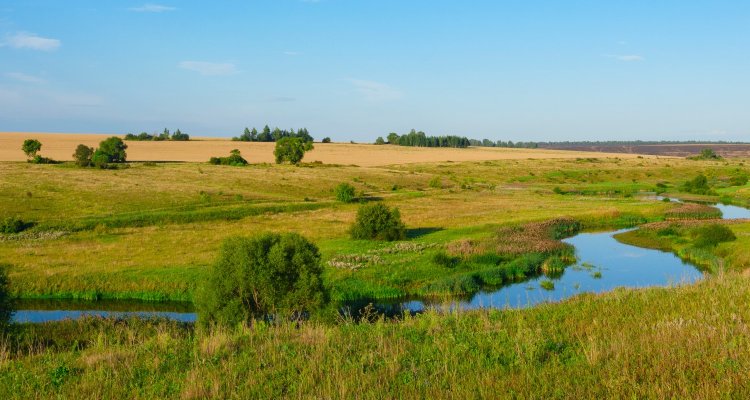
Project
KLIMAP: Climate adaptation in practice
Climate change on the Dutch sandy soils is changing the soil and water system and thus also impacts the opportunities for agriculture and nature in these areas. 24 parties, including regional governments, knowledge institutions and companies, have joined forces. Together they are investigating how the water and soil system on the sandy soils can be designed for climate resilient agriculture and nature. In the KLIMAP project ('Climate Adaptation in Practice'), which is co-financed by the Top Sectors Agri & Food and Water & Maritime, they are working on tools that are necessary for climate-proof design of Dutch sandy areas.
Introduction
Water boards, provinces, and other stakeholders in rural areas are actively working together in this project to gain insights into how climate change is impacting regions at a spatial, societal, and physical level. They are also determined to identify potential adaptation strategies for their land and water systems while exploring ways to implement these measures through regional processes. To accomplish this, they have adopted the use of development pathways (IPCC: climate development pathways) as a comprehensive approach to offer guidance for creating climate-resilient plans in Dutch sandy areas that prioritize sustainable economic use.
Objective
The aim of the project is to develop guidelines for the transition towards a climate-resilient design, utilization and management of the water and soils systems for (circular)agriculture and nature in the Dutch sandy regions.
Method
Guidelines for the application of climate-resilient development pathways for the Dutch sandy soils will be developed by experimenting with and learning from the application of various instruments and tools in different phases of the pathways process in the living labs of KLIMAP. The project is structured as a dynamic learning, participation and implementation process, where products are continuously refined while exchanging knowledge between the different partners and stakeholders.
(Expected) results
- A climate-resilient development pathways methodology that can be used to shape the transition towards a climate-resilient design of agriculture and nature for the Dutch sandy soil regions.
- Collaborative learning and co-creation with stakeholders to create tools and engage in climate-resilient planning of the areas.
- Data from pilot projects and living labs (technical, economic, social) to gain a deeper and more comprehensive understanding of the effectiveness of measures, revenue models and regional processes.
- Tools (processes, models, optimization, analysis and visualization, decision support systems) based on the process knowledge derived from the pilot projects and living labs.
- Guidelines for the application of the climate-resilient development pathways methodology for the pilot areas.